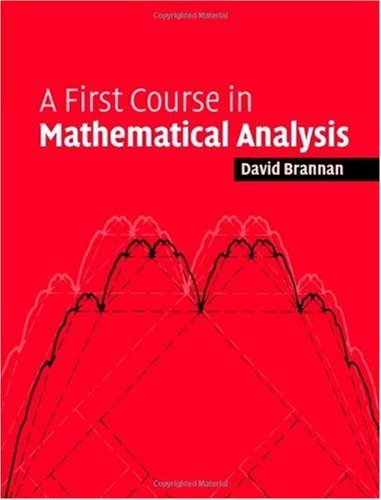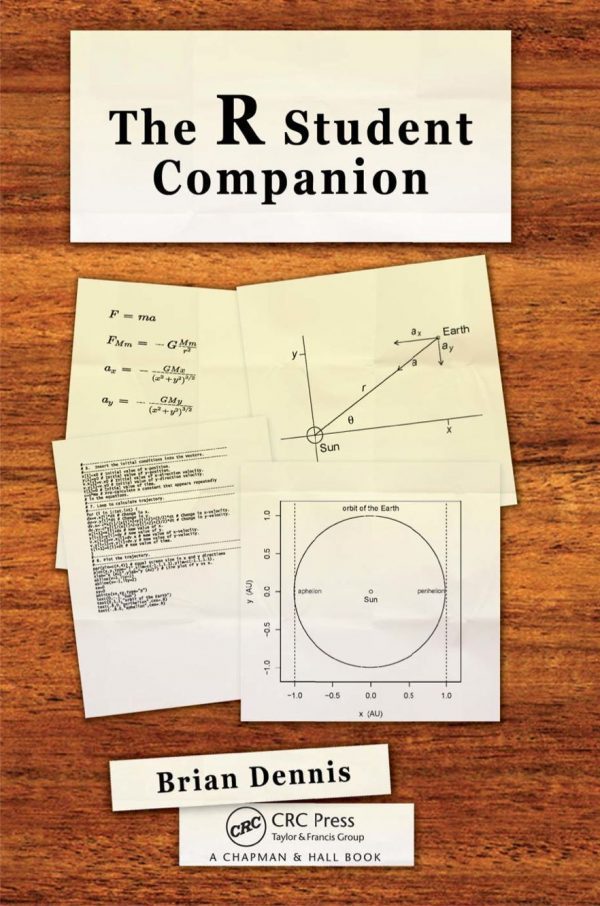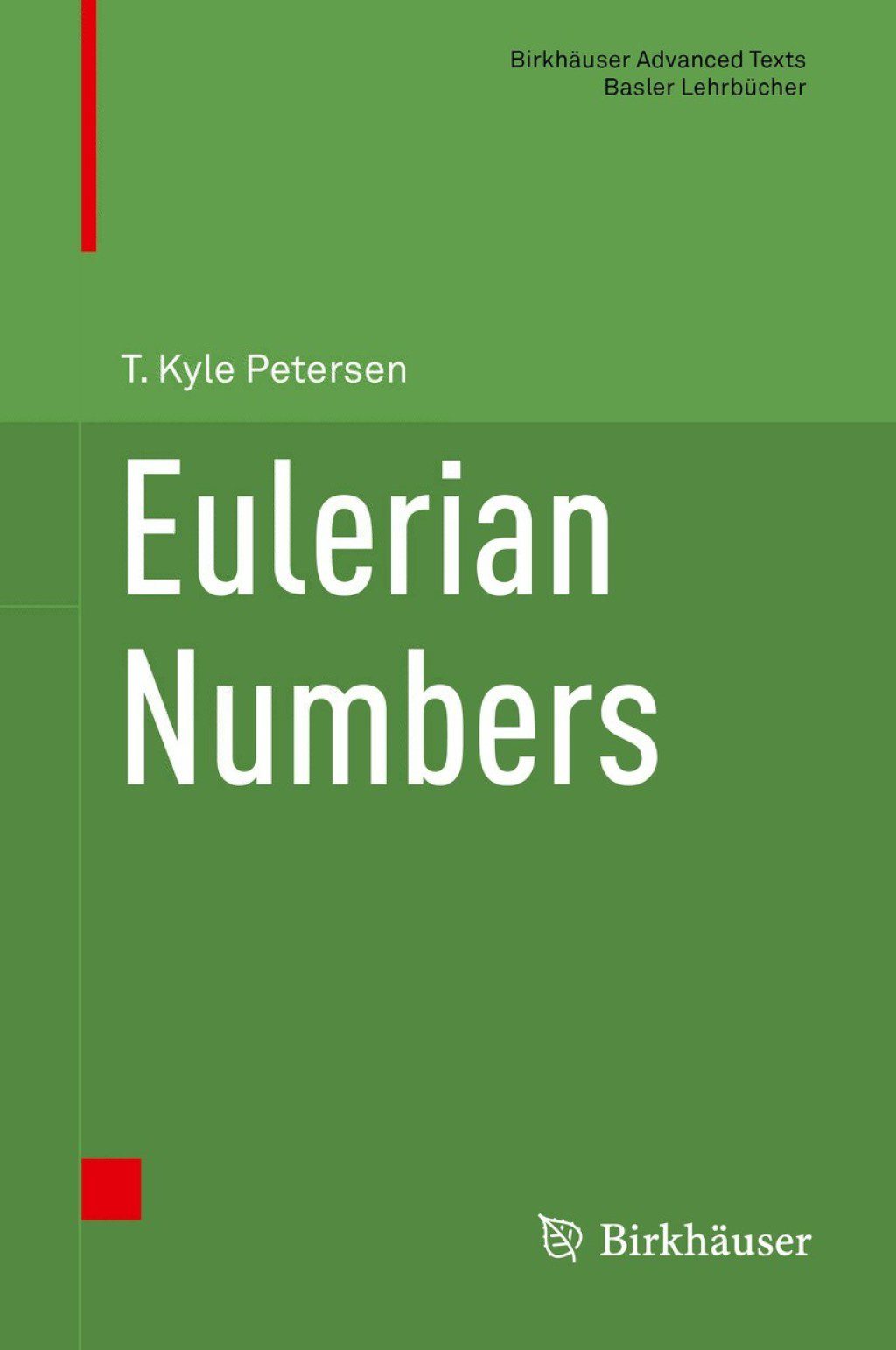David Alexander Brannan0521864399, 9780521864398
Table of contents :
Cover……Page 1
Half-title……Page 3
Title……Page 5
Copyright……Page 6
Dedication……Page 7
Contents……Page 9
Preface……Page 11
Outline of the content of the book……Page 12
Study guide……Page 13
Acknowledgements……Page 14
1 Numbers……Page 15
1.1.1 Rational numbers……Page 16
1.1.2 Decimal representation of rational numbers……Page 17
1.1.3 Irrational numbers……Page 19
1.1.4 The real number system……Page 20
1.1.5 Arithmetic in R……Page 22
1.2.1 Rearranging inequalities……Page 23
1.2.2 Solving inequalities……Page 24
1.2.3 Inequalities involving modulus signs……Page 26
1.3 Proving inequalities……Page 28
1.3.1 The Triangle Inequality……Page 29
1.3.3 More on inequalities……Page 31
Three important inequalities in Analysis……Page 34
1.4.1 Upper and lower bounds……Page 36
1.4.2 Least upper bounds and greatest lower bounds……Page 39
Least upper bounds and greatest lower bounds of functions……Page 41
1.4.3 The Least Upper Bound Property……Page 42
1.4.4 Proof of the Least Upper Bound Property……Page 43
1.5.1 Arithmetic in R……Page 44
1.5.2 The existence of roots……Page 46
1.5.4 Real powers……Page 48
Section 1.3……Page 49
Section 1.4……Page 50
2 Sequences……Page 51
2.1.1 What is a sequence?……Page 52
2.1.2 Monotonic sequences……Page 53
2.2.1 What is a null sequence?……Page 57
2.2.2 Proofs……Page 62
Basic null sequences……Page 65
2.3.1 What is a convergent sequence?……Page 66
Applying the Combination Rules……Page 69
2.3.3 Further properties of convergent sequences……Page 72
2.4.1 What is a divergent sequence?……Page 75
2.4.2 Bounded and unbounded sequences……Page 76
2.4.3 Sequences which tend to infinity……Page 77
2.4.4 Subsequences……Page 79
2.5.1 Monotonic sequences……Page 82
The Bolzano–Weierstrass Theorem……Page 84
2.5.2 Sequences defined by recursion formulas……Page 85
2.5.3 The number e……Page 87
2.5.4 The number phi……Page 90
2.5.5 Proofs……Page 92
Section 2.1……Page 93
Section 2.3……Page 94
Section 2.5……Page 95
3 Series……Page 97
3.1.1 What is a convergent series?……Page 98
Sigma notation……Page 100
Decimal representation of rational numbers……Page 101
3.1.3 Telescoping series……Page 102
3.1.4 Combination Rules for convergent series……Page 103
3.1.5 The Non-null Test……Page 104
3.2.1 Tests for convergence……Page 106
Another test for convergence……Page 111
3.2.2 Proofs……Page 112
3.3.1 Absolute convergence……Page 117
3.3.2 The Alternating Test……Page 119
3.3.3 Rearrangement of a series……Page 122
3.3.4 Multiplication of series……Page 127
3.3.5 Overall strategy for testing for convergence……Page 130
3.3.6 Proofs……Page 131
3.4.1 The definition of ex as a power series, for x > 0……Page 136
3.4.2 Calculating e……Page 138
3.4.3 The definition of ex as a power series, for all real x……Page 140
Section 3.1……Page 141
Section 3.3……Page 142
4 Continuity……Page 144
4.1.1 What is continuity?……Page 145
4.1.2 Rules for continuous functions……Page 150
Trigonometric functions……Page 153
The exponential function x………Page 155
4.2.1 The Intermediate Value Theorem……Page 157
Antipodal points……Page 159
4.2.2 Zeros of polynomials……Page 160
4.2.3 The Extreme Values Theorem……Page 163
4.3.1 Existence of an inverse function……Page 165
Proving that a function f is one–one……Page 166
4.3.2 The Inverse Function Rule……Page 167
The nth root function……Page 169
Inverse trigonometric functions……Page 170
The function loge……Page 171
Inverse hyperbolic functions……Page 172
4.3.4 Proof of the Inverse Function Rule……Page 173
4.4.1 The definition of ax……Page 175
4.4.2 Further properties of exponentials……Page 177
Section 4.1……Page 178
Section 4.2……Page 179
Section 4.3……Page 180
5 Limits and continuity……Page 181
5.1.1 What is a limit of a function?……Page 182
5.1.2 Limits and continuity……Page 185
5.1.3 Rules for limits……Page 186
5.1.4 One-sided limits……Page 189
5.2.1 Functions which tend to infinity……Page 190
5.2.2 Behaviour of f(x) as x tends to………Page 192
5.2.3 Composing asymptotic behaviour……Page 194
5.3 Limits of functions – using Epsilon and Delta……Page 195
5.3.1 The Epsilon – Delta definition of limit of a sequence……Page 196
5.3.2 The Epsilon – Delta definition of limit of a function……Page 198
5.4.1 The Epsilon – Delta definition of continuity……Page 207
5.4.2 The Dirichlet and Riemann functions……Page 211
5.4.3 Proofs……Page 213
5.5 Uniform continuity……Page 214
Section 5.2……Page 217
Section 5.5……Page 218
6 Differentiation……Page 219
6.1.1 What is differentiability?……Page 220
6.1.2 Differentiability and continuity……Page 226
6.1.3 The sine, cosine and exponential functions……Page 227
6.1.4 Higher-order derivatives……Page 229
6.2.1 The Combination Rules……Page 230
6.2.2 The Composition Rule……Page 232
6.2.3 The Inverse Function Rule……Page 234
Exponential functions……Page 237
6.2.4 Proofs……Page 238
6.3.1 The Local Extremum Theorem……Page 242
6.3.2 Rolle’s Theorem……Page 244
6.4.1 The Mean Value Theorem……Page 246
6.4.2 Positive, negative and zero derivatives……Page 248
Inequalities……Page 251
6.5.1 Cauchy’s Mean Value Theorem……Page 252
6.5.2 l’Hopital’s Rule……Page 254
6.6.1 What is the Blancmange function?……Page 258
6.6.2 Continuity of the Blancmange function……Page 261
6.6.3 The Blancmange function is differentiable nowhere……Page 262
Section 6.2……Page 266
Section 6.3……Page 267
Section 6.5……Page 268
7 Integration……Page 269
7.1 The Riemann integral……Page 270
7.1.1 The Riemann integral and integrability……Page 272
Properties of Riemann sums……Page 275
7.1.2 Criteria for integrability……Page 280
7.2.1 Infimum and Supremum of functions (revisited)……Page 286
7.2.2 Monotonic and continuous functions……Page 290
Sum Rule……Page 292
Product Rule……Page 293
Modulus Rule……Page 294
7.3.1 Fundamental Theorem of Calculus……Page 296
7.3.2 Finding primitives……Page 298
7.3.3 Techniques of integration……Page 299
7.4.1 The key inequalities……Page 302
Reduction of Order method……Page 307
Wallis’s Formula……Page 309
7.4.3 Maclaurin Integral Test……Page 311
Sequences revisited……Page 314
7.5.1 The tilda notation……Page 317
7.5.2 Stirling’s Formula……Page 319
7.5.3 Proof of Stirling’s Formula……Page 321
Section 7.1……Page 323
Section 7.2……Page 324
Section 7.3……Page 325
Section 7.5……Page 326
8 Power series……Page 327
8.1.1 What are Taylor polynomials?……Page 328
The function f(x)=sin x……Page 331
The function f(x)………Page 332
Which functions can be approximated by Taylor polynomials?……Page 333
8.2.1 Taylor’s Theorem and approximation……Page 334
8.2.2 Taylor’s Theorem and power series……Page 339
8.3.1 The radius of convergence……Page 343
8.3.2 Abel’s Limit Theorem……Page 347
8.3.3 Proofs……Page 350
8.4.1 Rules for power series……Page 352
8.4.2 General Binomial Theorem……Page 356
8.4.3 Proofs……Page 358
8.5.1 Calculating Phi……Page 360
8.5.2 Proof that is Phi irrational……Page 362
Section 8.1……Page 364
Section 8.3……Page 365
Section 8.4……Page 366
Sets……Page 368
Functions……Page 369
Principle of Mathematical Induction……Page 371
Appendix 2: Standard derivatives and primitives……Page 373
Appendix 3: The first 1000 decimal places of………Page 375
Section 1.1……Page 377
Section 1.2……Page 378
Section 1.3……Page 380
Section 1.4……Page 383
Section 2.1……Page 385
Section 2.2……Page 387
Section 2.3……Page 389
Section 2.4……Page 391
Section 2.5……Page 393
Section 3.1……Page 396
Section 3.2……Page 398
Section 3.3……Page 401
Section 4.1……Page 407
Section 4.2……Page 411
Section 4.3……Page 414
Section 4.4……Page 415
Section 5.1……Page 416
Section 5.2……Page 419
Section 5.3……Page 421
Section 5.4……Page 425
Section 6.1……Page 427
Section 6.2……Page 431
Section 6.3……Page 434
Section 6.4……Page 435
Section 6.5……Page 437
Section 7.1……Page 440
Section 7.2……Page 444
Section 7.3……Page 447
Section 7.4……Page 449
Section 7.5……Page 454
Section 8.1……Page 457
Section 8.2……Page 460
Section 8.3……Page 463
Section 8.4……Page 464
Section 8.5……Page 469
Index……Page 471







Reviews
There are no reviews yet.